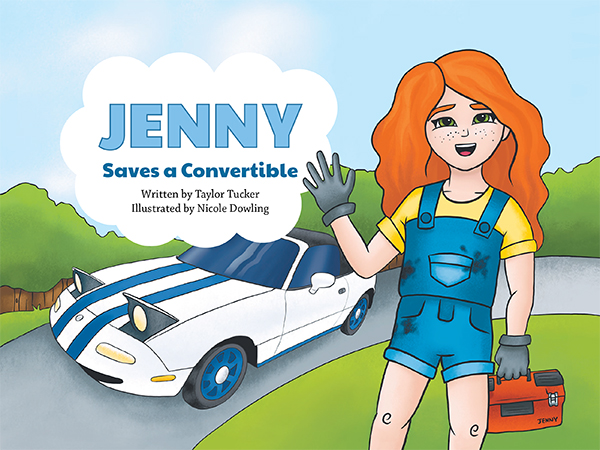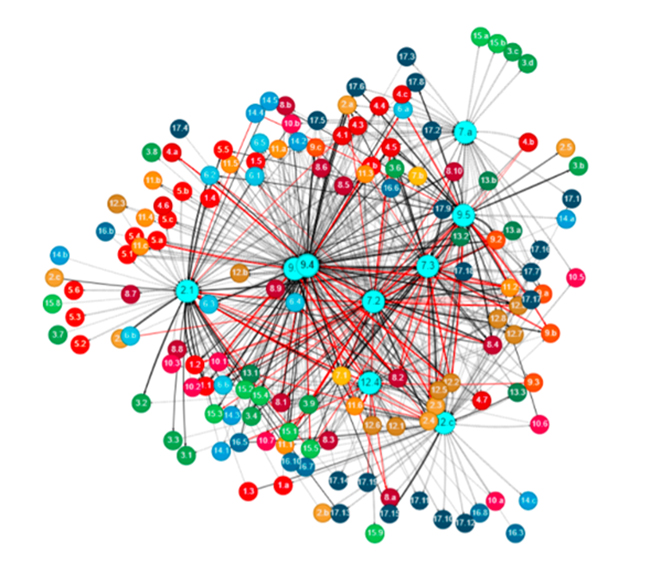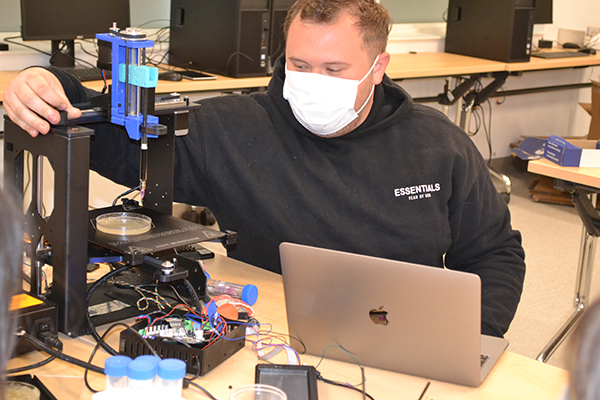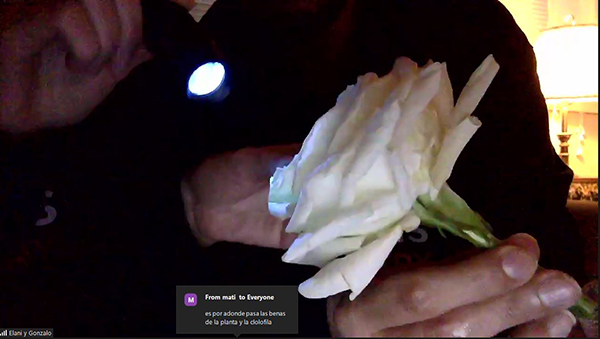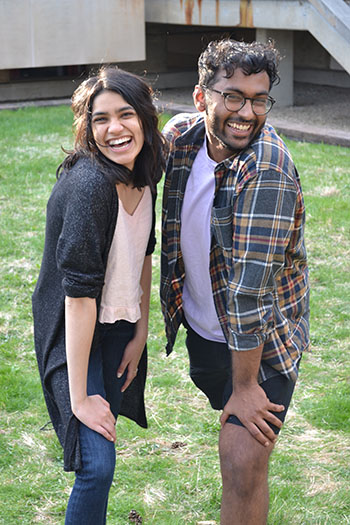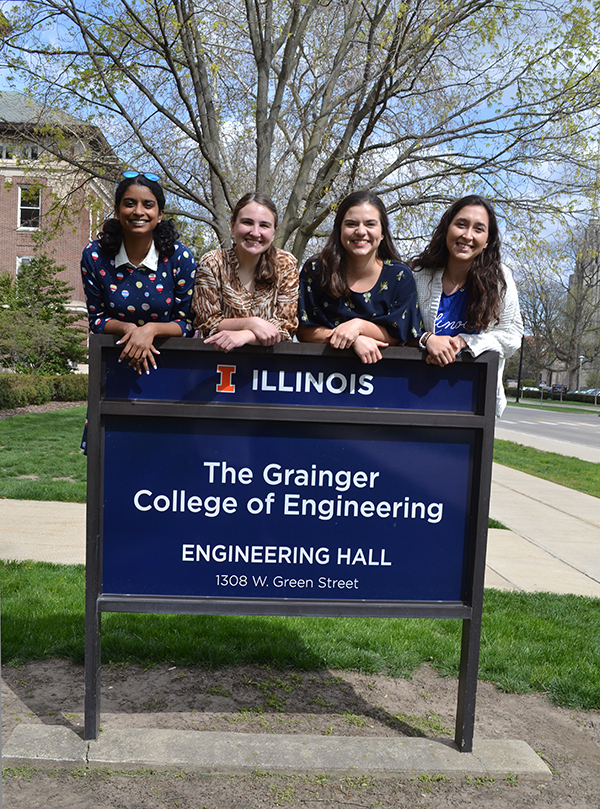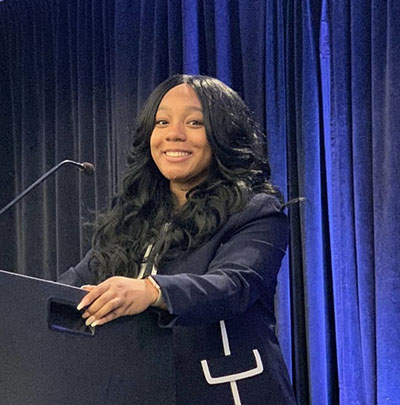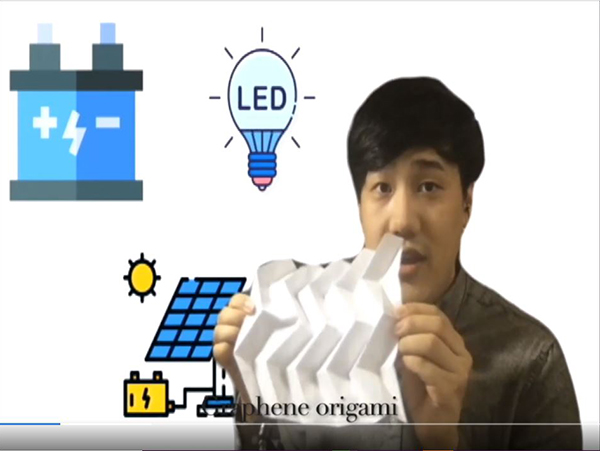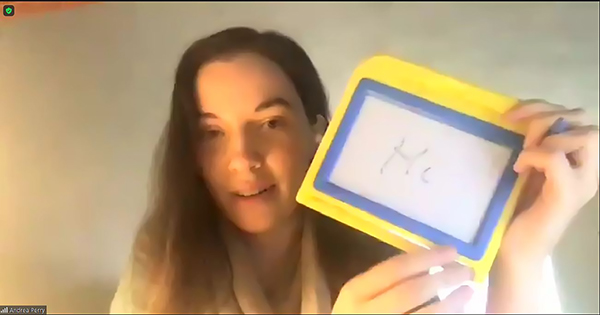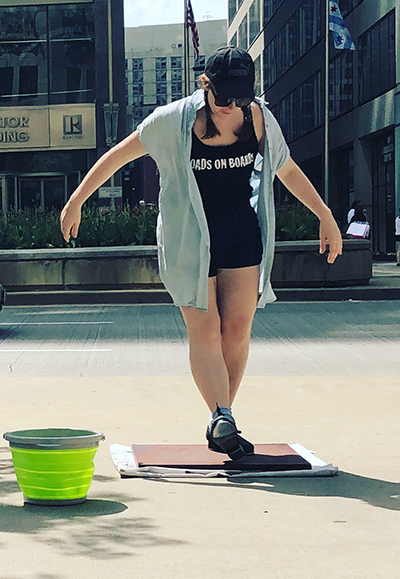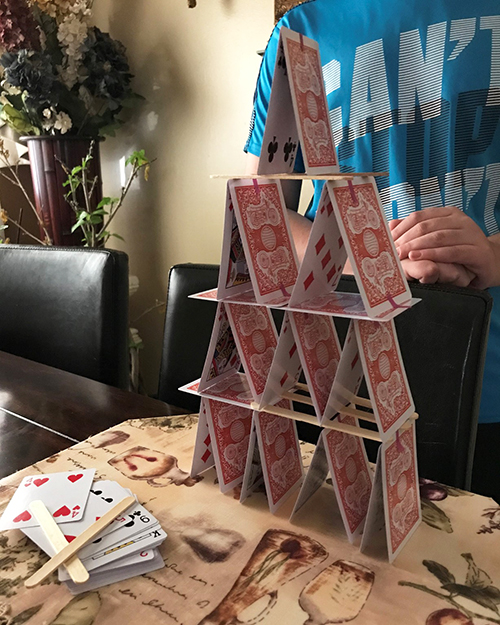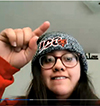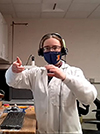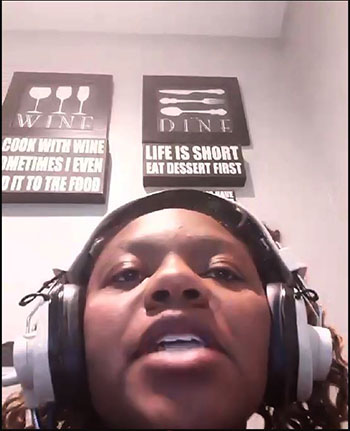MCBees Expose Jefferson Middle School Students to “Cool” Science Activities
April 23, 2018
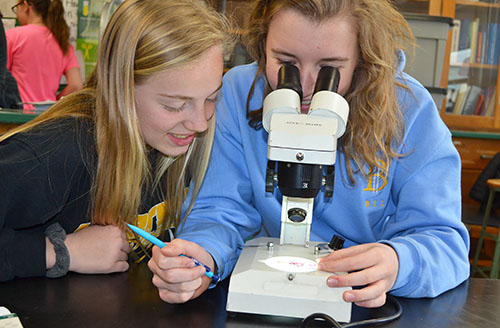
Two Jefferson Middle School eighth graders study an onion root sample under a microscope.
Helping to bring the material in science textbooks alive, and maybe even introduce some stuff not found in textbooks, eight MCB PhD students have been dropping by Jefferson Middle School during the spring 2018 semester to share their expertise with eighth graders. Slated to visit twice a month, from February through May, the Illinois students, members of the MCBees GSA (Graduate Student Association), were tasked with presenting various topics and leading some corresponding hands-on activities in Sammy Yoo and Elizabeth Wheatman’s eighth-grade classrooms. Their goal? To foster interest in science and maybe even impart their own passion for research to the younger students.
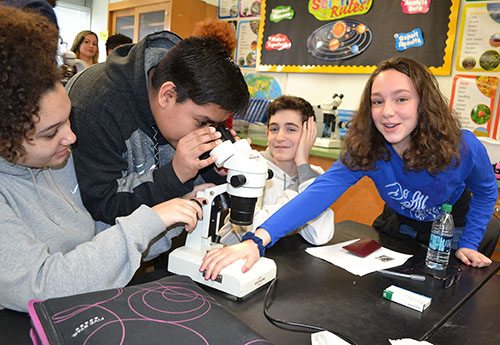
Above: A group of Jefferson Middle School eighth graders study an onion root sample under a microscope.
Below: A Jefferson Middle School eighth grade student and his teacher, Elizabeth Wheatman, shake hands during a "hands-on" activity about how germs spread.
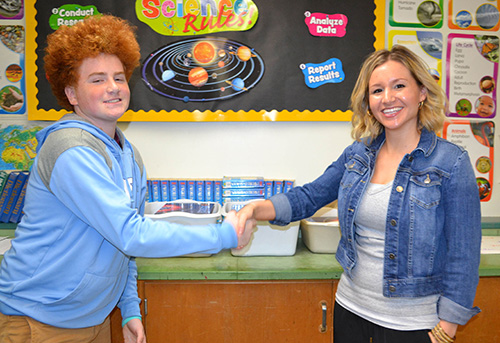
The activities touched on fun and exciting science topics. According to Mara Livezey, MCBees Outreach Coordinator, when she and the other volunteers were discussing what kind of impact they hoped to have at Jefferson, they decided to introduce interesting topics not normally taught in middle school.
“That way, we could introduce the students to ‘cool science’ to (hopefully) pique their interest in STEM,” says Livezey. And at the same time, they sought to “Introduce them to something that they wouldn't normally learn in their curriculum.” Each of the volunteers then came up with their own topic; some were related to the presenter's research, but many weren’t, and were chosen because they were interesting and fun.
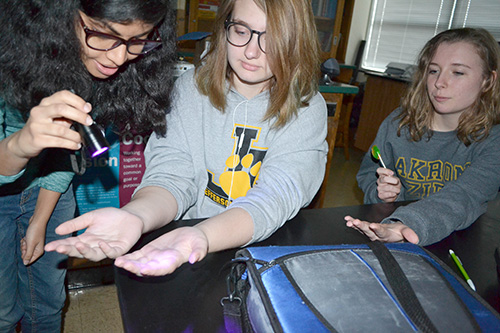 MCB PhD student Anshika Gupta uses a black light to reveal the "germs" still left on students' hands after different methods of cleaning.
MCB PhD student Anshika Gupta uses a black light to reveal the "germs" still left on students' hands after different methods of cleaning.
For instance the March 27th session dealt with germs—specifically, how infections like colds and the flu are spread. After discussing the differences between a couple of the primary culprits, bacteria and viruses, the MCBees led the younger students in an activity that was literally a "hands-on" demonstration.
A few students, chosen to act as “Typhoid Marys” for the group, had Germ-Glo Powder (a fluorescent powder that simulates germs) sprinkled on their hands. To begin the simulation to illustrate how infection is spread, the students all shook hands. Then, to underscore the need for thorough hand washing to prevent the spread of infection, students were divided into three groups; some washed their hands with just water; others used soap and water; the third group used hand sanitizer. The length of time students washed their hands was also varied. Students’ hands were then examined under a black light. Which hand-washing method work best? A thorough washing with good old soap and water.
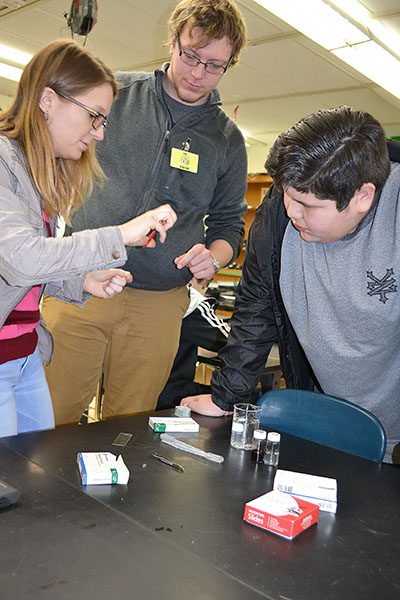
Two MCB students prepare an onion root sample for a student to put on a slide.
In April, one of the topics the MCBees taught about was visualizing cell division. During this lesson, students made slides of growing onion roots in order to learn about how cells divide. The activity also acquainted them with how to prepare a material in order to examine it under a microscope. First they treated the sample with an acid, followed by a dye which would highlight the DNA, then compressed the sample, and finally looked at it under a microscope.
In an April session about chemical reactions, students will make elephant toothpaste using various combinations to see which has the biggest reaction.
Fruit flies will be the first topic in May, during which the students will study fruit flies to learn about human development, and while looking at flies with different characteristics (eye color, wing shape, etc.), will learn a bit about genetics.
In the final session in May, the students are scheduled to learn about rock formation and geodes. After learning about how rocks are formed, students will do a hands-on activity where they start growing their own rock crystals.
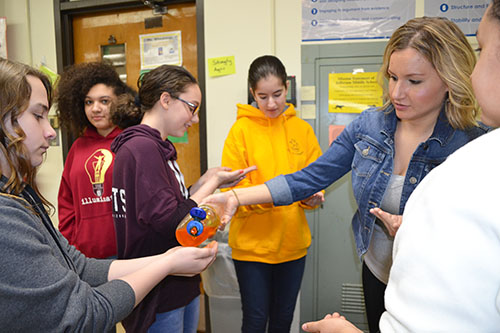
JMS science teacher Elizabeth Wheatman (second from the right) doles out soap to the students who were to wash their hands with soap and water for various lengths of time during the activity about the spread of infection.
Two eighth grade science teachers who teach Flex classes, Sammy Yoo and Elizabeth Wheatman, were delighted to invite the MCBees into their classrooms. “We both have a Flex period where we're a lot more flexible with what we can do during that time,” says Yoo. “So we don't have a hard curriculum that we have to follow for the Flex period. We have more freedom in terms of what we can do, so we can afford to have these guys over and do science stuff two times a month.”
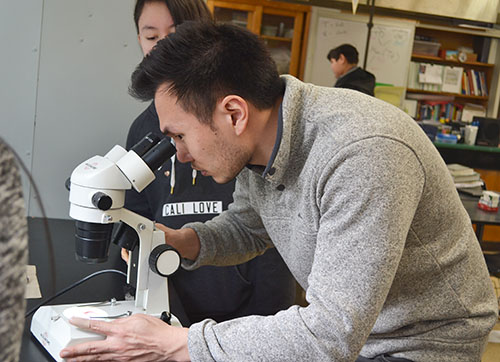 Eighth grade science teacher, Sammy Yoo, adjusts a microscope to ensure that the onion root cells are clearly visible for his students.
Eighth grade science teacher, Sammy Yoo, adjusts a microscope to ensure that the onion root cells are clearly visible for his students.
Yoo, who teaches 8th grade science, believes his students are reaping a couple of benefits via the partnership. For one, “They're getting good science stuff,” he says. “These guys are grad students at the university, so obviously they know what they're talking about.”
But he also believes it’s good for his students to be exposed to and to hear from people who are passionate about science but who aren't teachers.
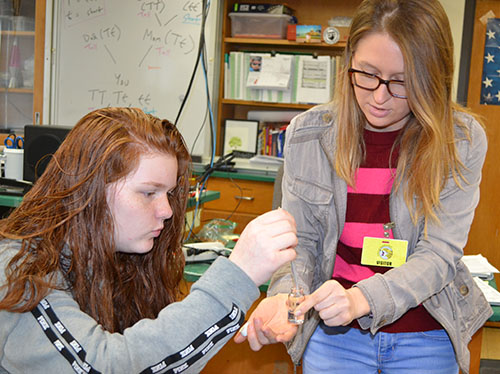 An eighth grader gets a few drops of acid from MCB PhD student Kristen Farley (right) in order to prepare the onion root sample for viewing under a microscope.
An eighth grader gets a few drops of acid from MCB PhD student Kristen Farley (right) in order to prepare the onion root sample for viewing under a microscope.
“Obviously I think there's a proper place for teachers,” he acknowledges, “but I feel like sometimes it's almost like your parents with the same old naggy voice. Just to hear it from an outsider, it almost affirms that what your teacher's talking about is true.”
He also believes hearing from actual scientists like the MCB students, who are doing cutting-edge research to solve real-world problems might switch on the light bulb for his students. “It's a little different where their profession is science,” he concedes.
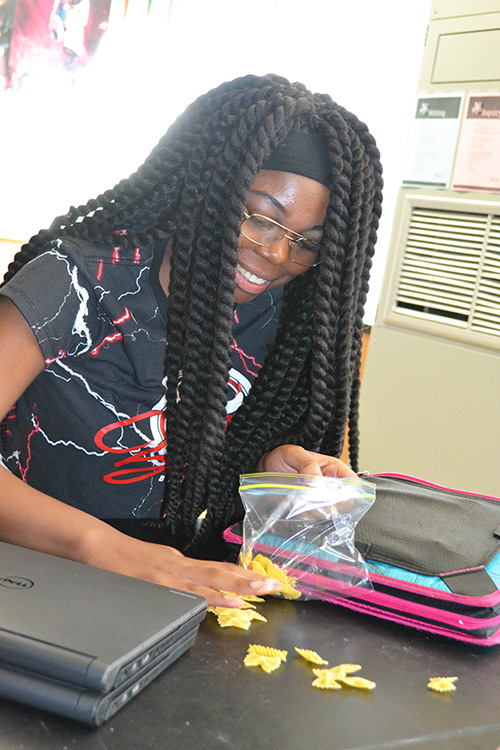
A Jefferson Middle School student works on a hands-on activity that taught the students about the prevalence of antibiotic resistant bacteria.
“I know Mara, for example, is doing cancer research," Loo continues. "So maybe that would strike a chord with some of my students, like, ‘Wow, science can actually make a change!’ And ‘If I'm serious about science, maybe I can help fight cancer!’ That's something that they can get only from her that they wouldn't necessarily be able to get just from me. Just to expose them to that kind of stuff is always a good thing.”
What kind of impact are the MCBee’s activities having on his students? “Some kids obviously aren't going to be intrigued by anything, regardless of who's presenting it to them—whether it's me or anybody else,” he admits. But some of his students are intrigued.
“I can definitely see some kids appreciate doing the hands-on stuff. They're talking about current things happening in science today, so I can see their eyes light up a little bit about that. It's exciting for them.”
One MCBee member helping out at Jefferson has been Anshika Gupta, a second year graduate student in the Department of Microbiology, who works in Dr. James Imlay’s lab, where she studies DNA repair enzymes under oxidative stress.
Gupta reports volunteering for the outreach because she really likes meeting school kids and talking to them about science…and trying to get them intrigued with science.
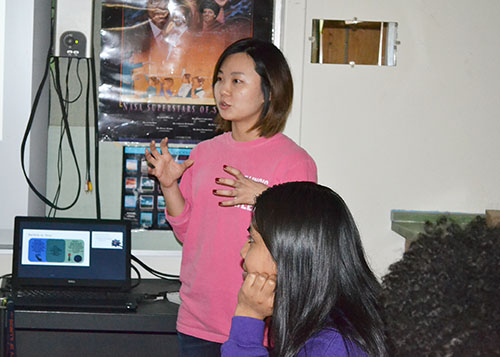
An MCB student teaches the students about germs.
She indicates that the MCB’s major goal with the kind of activities they conduct is to “make middle school kids develop an interest in science.” She adds that there are many things that the children only learn about in textbooks, but “Giving them a physical demonstration of the concept helps them understand and retain it better. And that’s what we aim to do.”
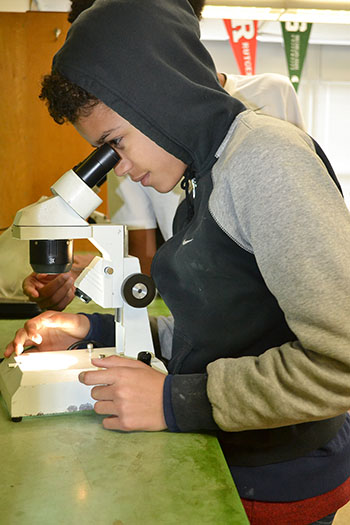
An eighth grader examines onion root through a microscope.
According to Gupta, they also strive to introduce material that kids don’t get at school. “There are a lot of concepts which cannot be covered in textbooks,” she explains. “Through this program, they also get to learn some new cool concepts of science.”
How did the MCBees’ collaboration with Jefferson Middle School happen?
As outreach coordinator for the GSA, Livezey says one of her goals for this year was to extend their impact into public schools in the Champaign-Urbana area. She also specifically wanted to form connections with a middle school, as they haven't regularly worked with this age group yet. So she reached out to the middle schools in Champaign-Urbana. Staff at Jefferson expressed interest, and luckily, the two teachers’ class schedules matched up with her volunteer's availability. “We are hoping to continue this collaboration for years to come,” says Livezey.
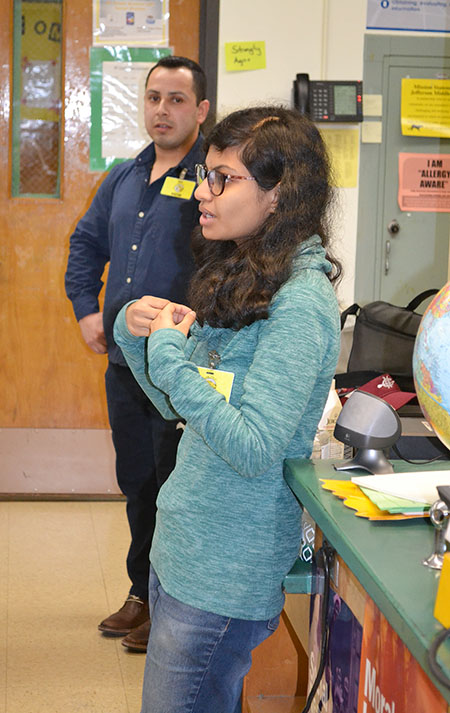
Jeremiah Heredia and Anshika Gupta explain an activity to the eighth graders.
Story and photos by Elizabeth Innes, Communications Specialist, I-STEM Education Initiative.
More: Graduate STEM Outreach, 6-8 Outreach, MCBees, Jefferson Middle School, 2018
For more I-STEM articles about the MCBees, please see:
- At NGS’ Science Social Café, MCBees Women Serve as Role Models, Exemplify Careers in Science
- MCB’s Jeremiah Heredia: Passionate about HIV-1 Research, STEM Outreach to Underserved
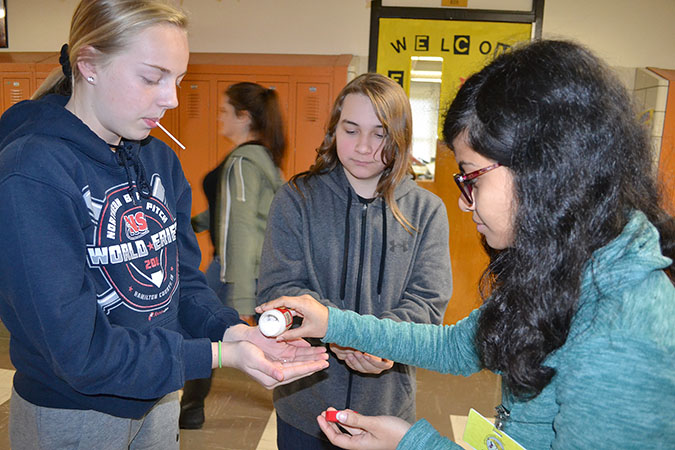
Above: Anshika Gupta puts Germ-Glo powder on students' hands to replicate germs and how they are spread.
Below: MCB grad student, Pradeep Kumar (left), works with JMS eighth graders looking at an onion root sample through a microscope.
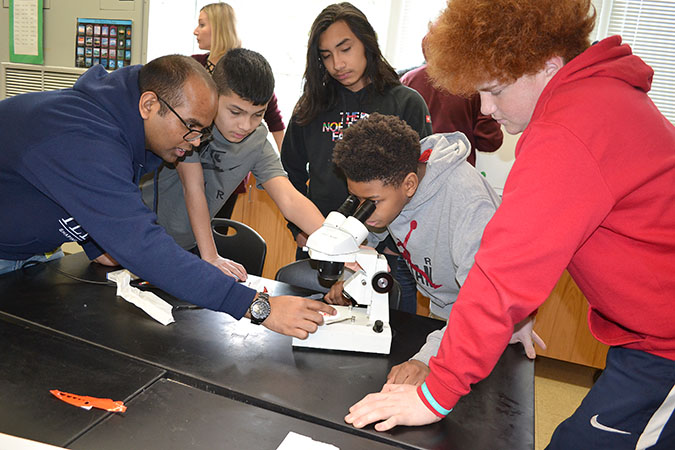
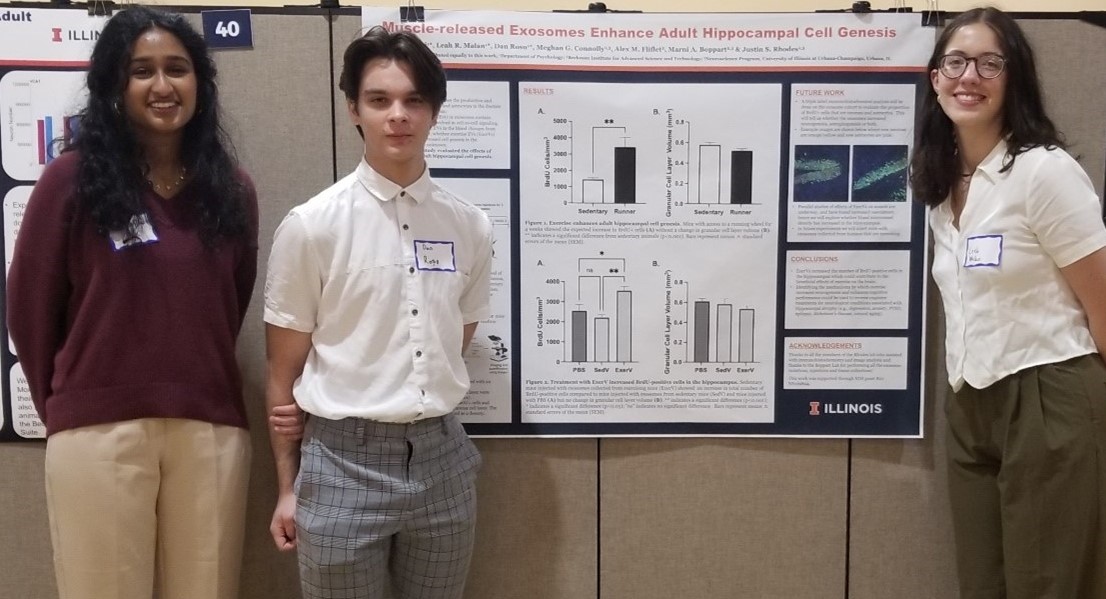
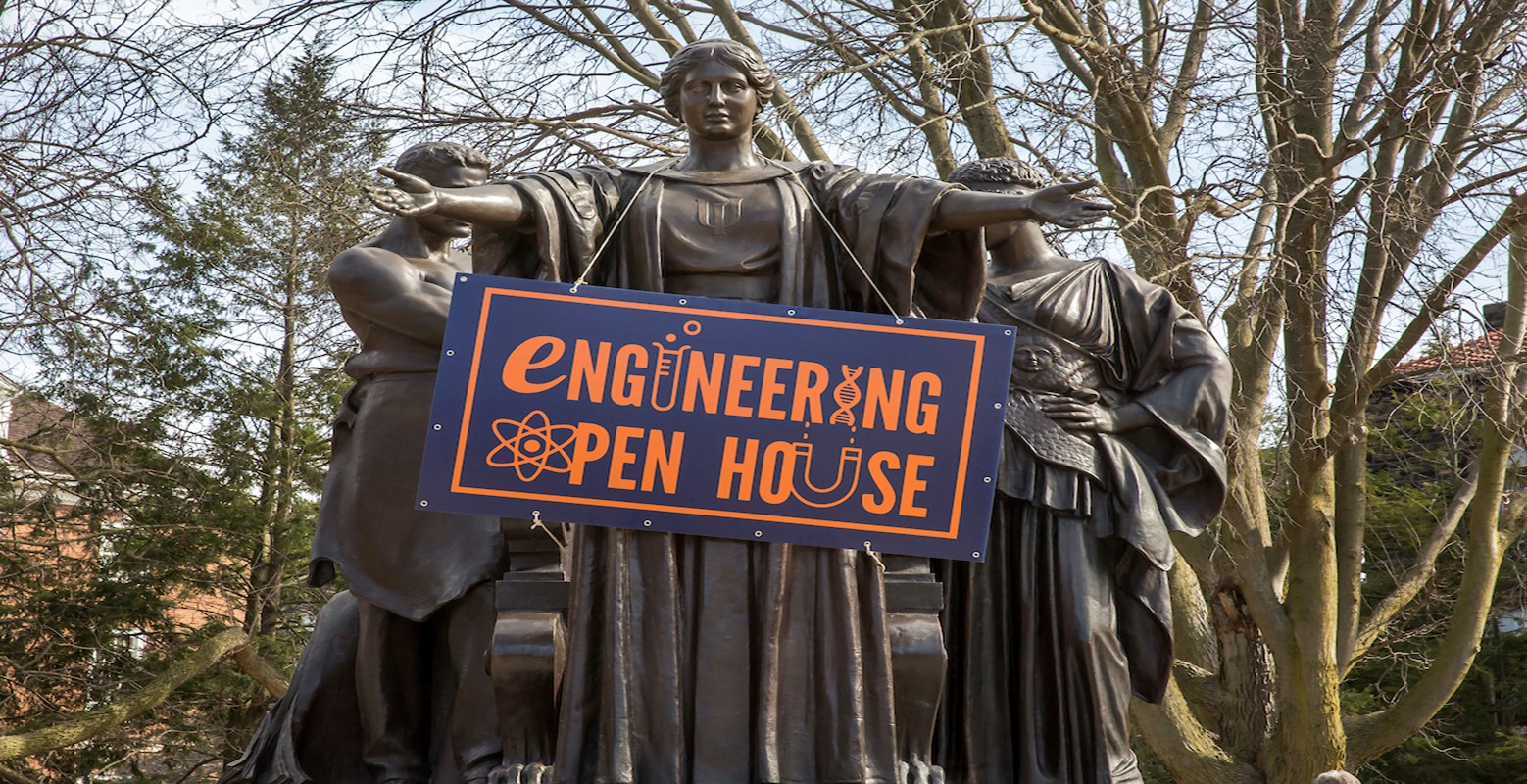
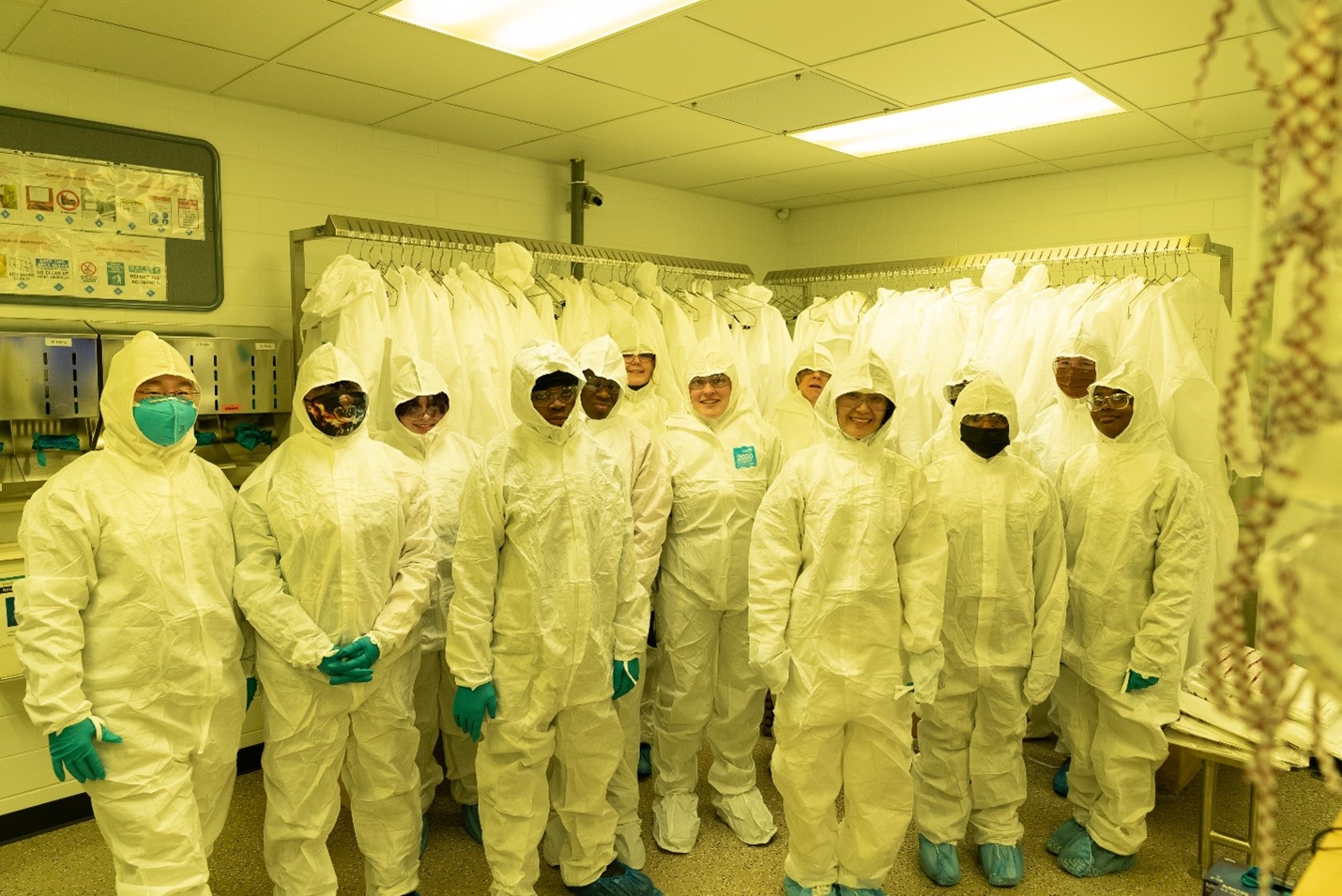
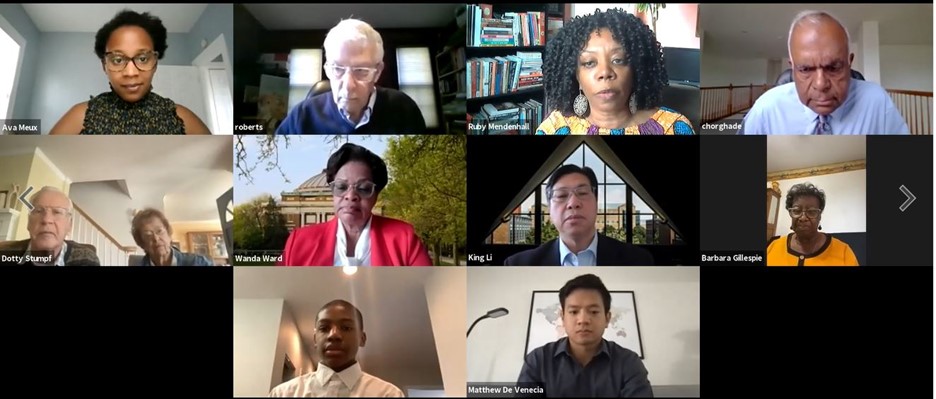
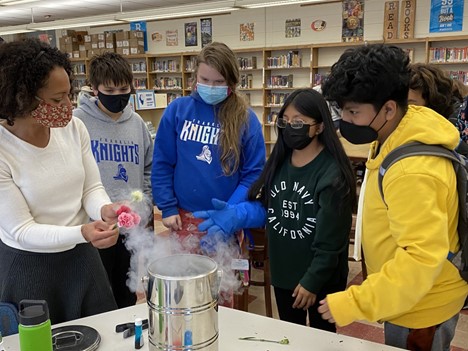
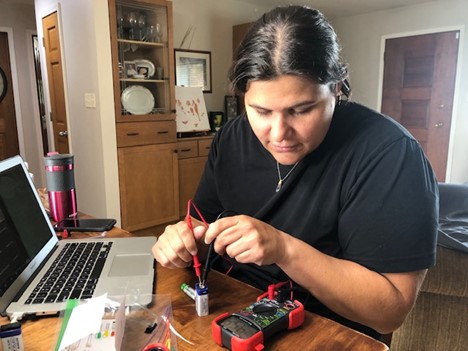
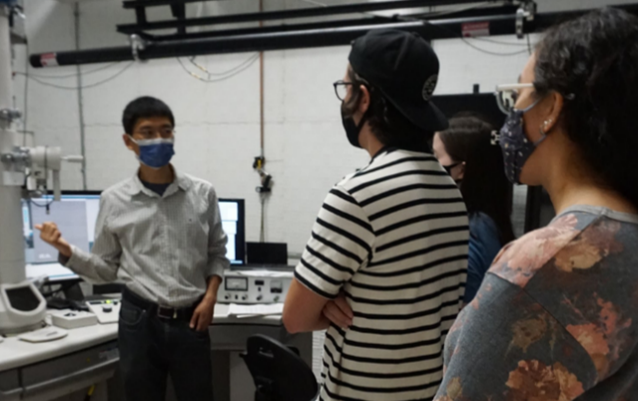
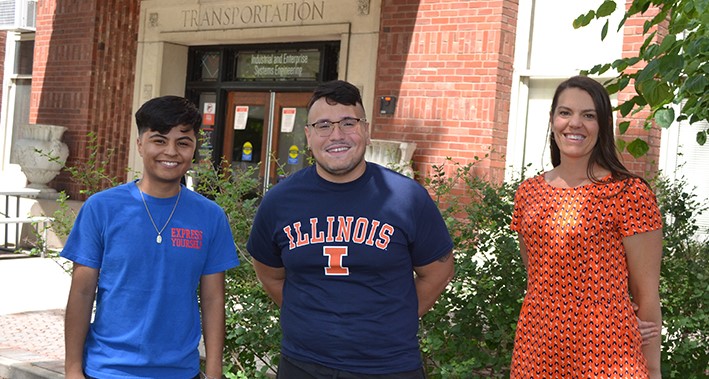


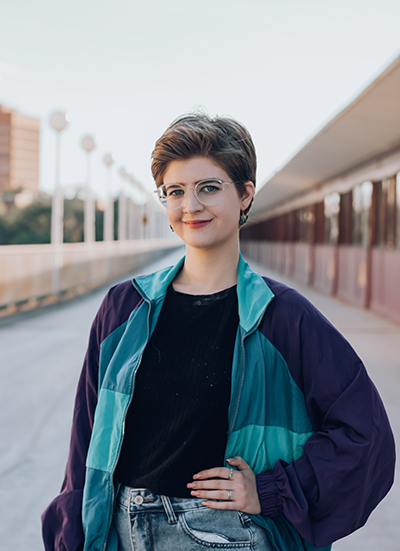
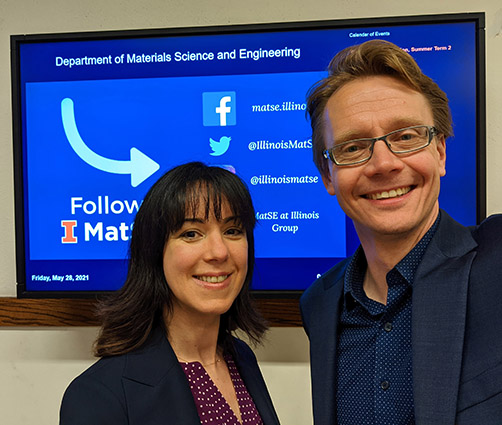
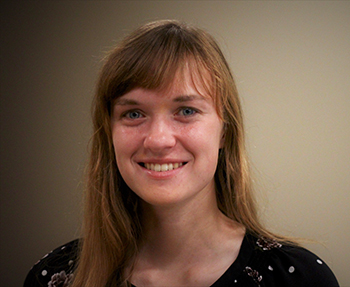
.jpg)
